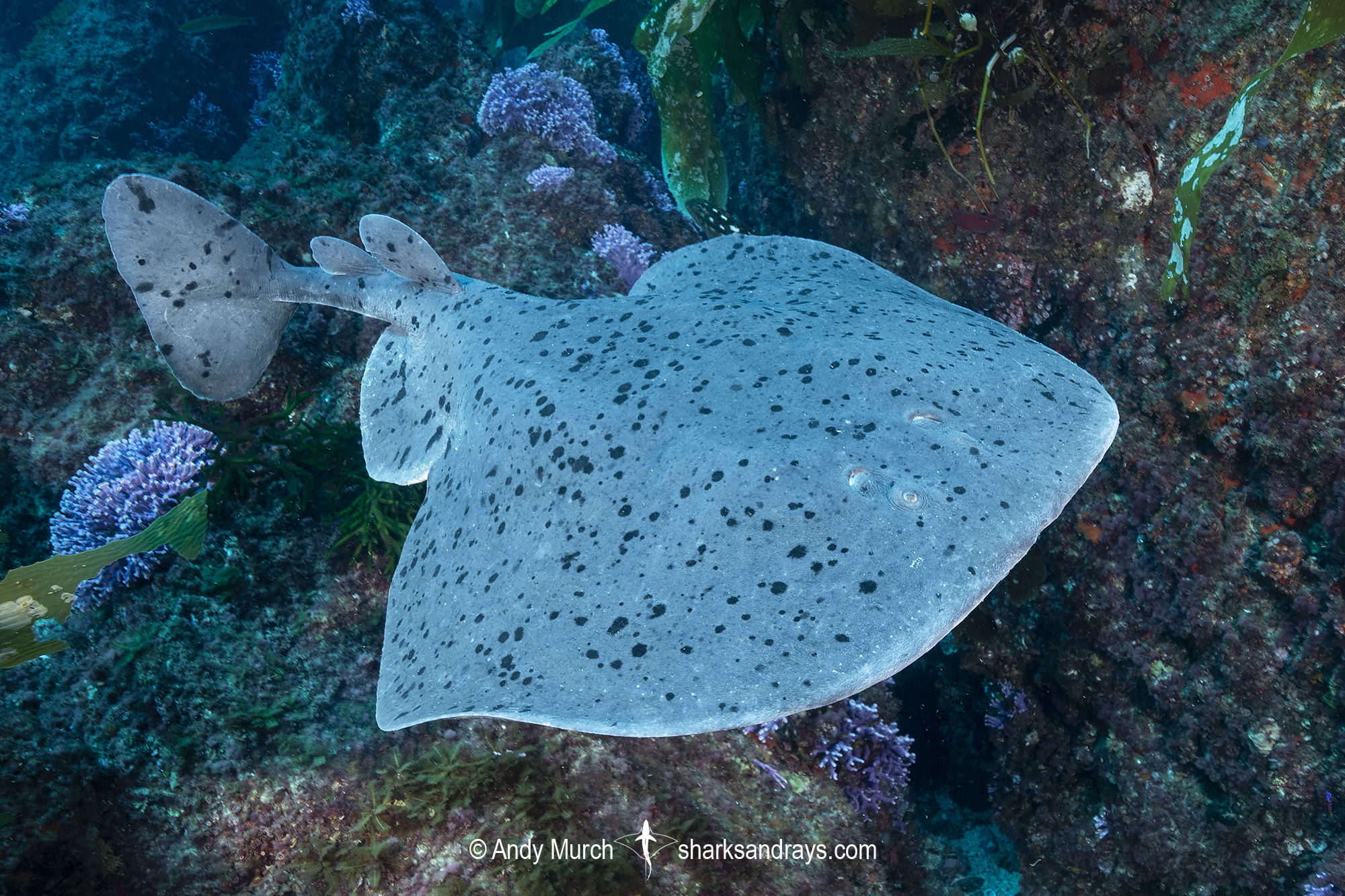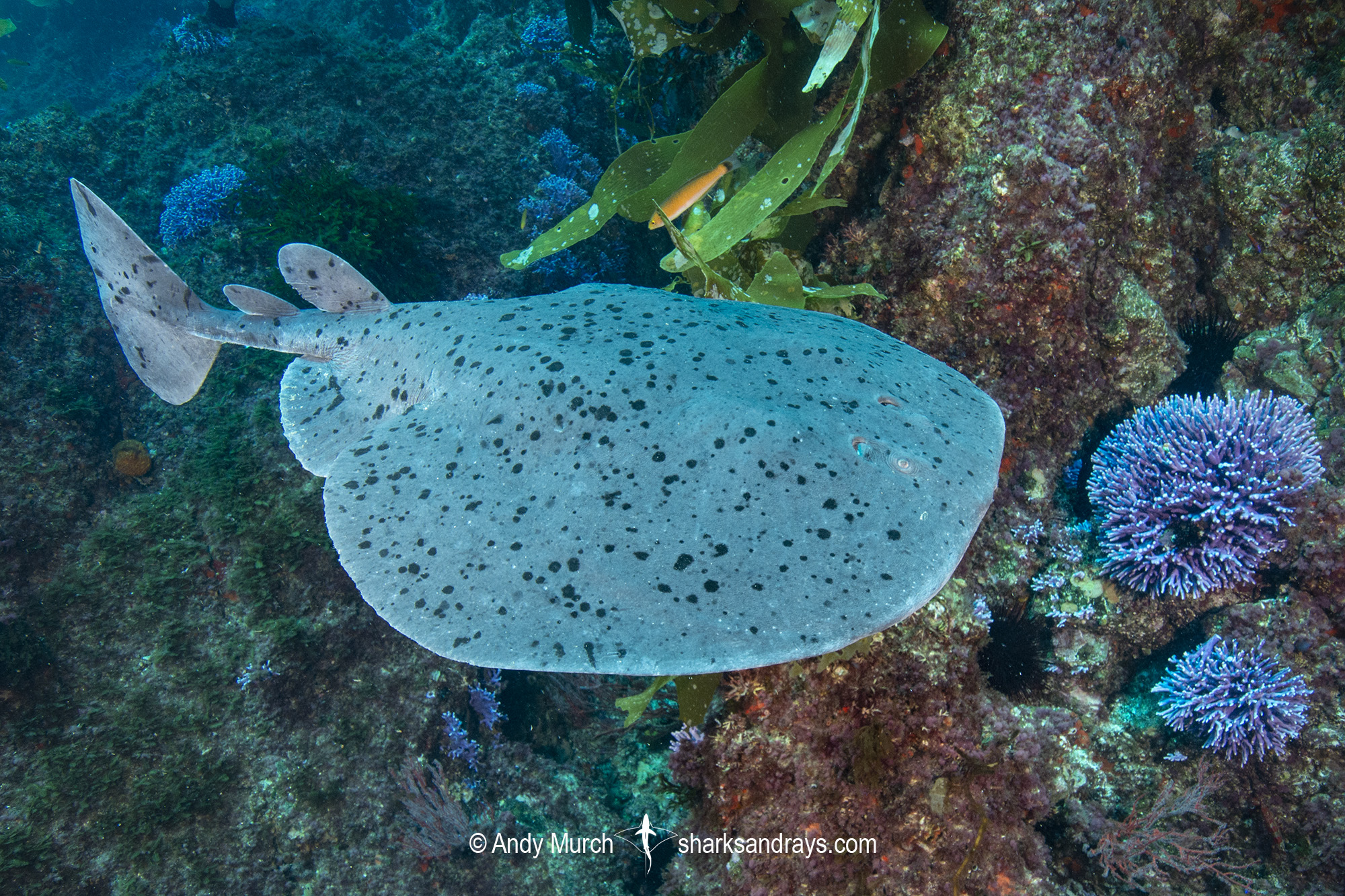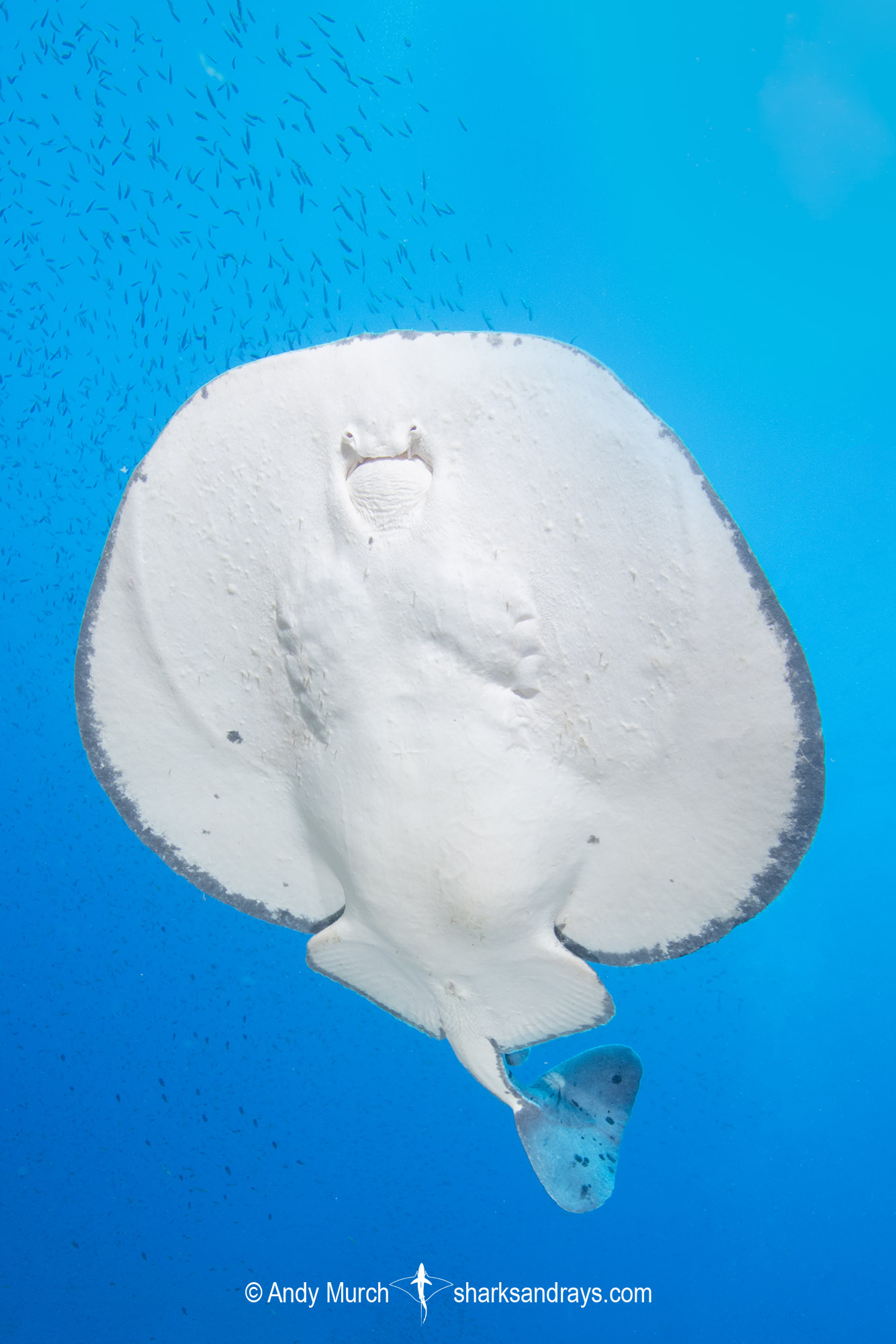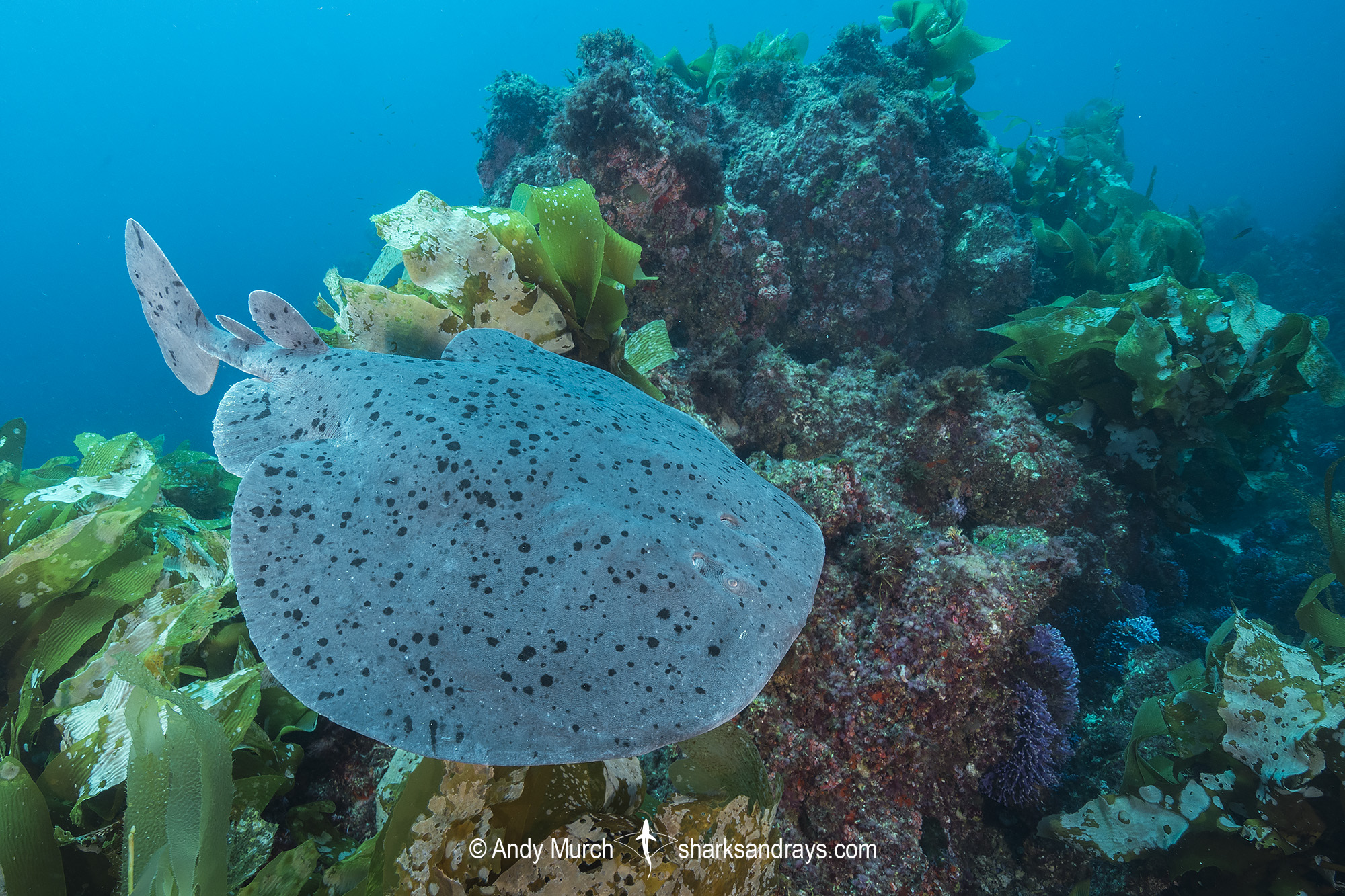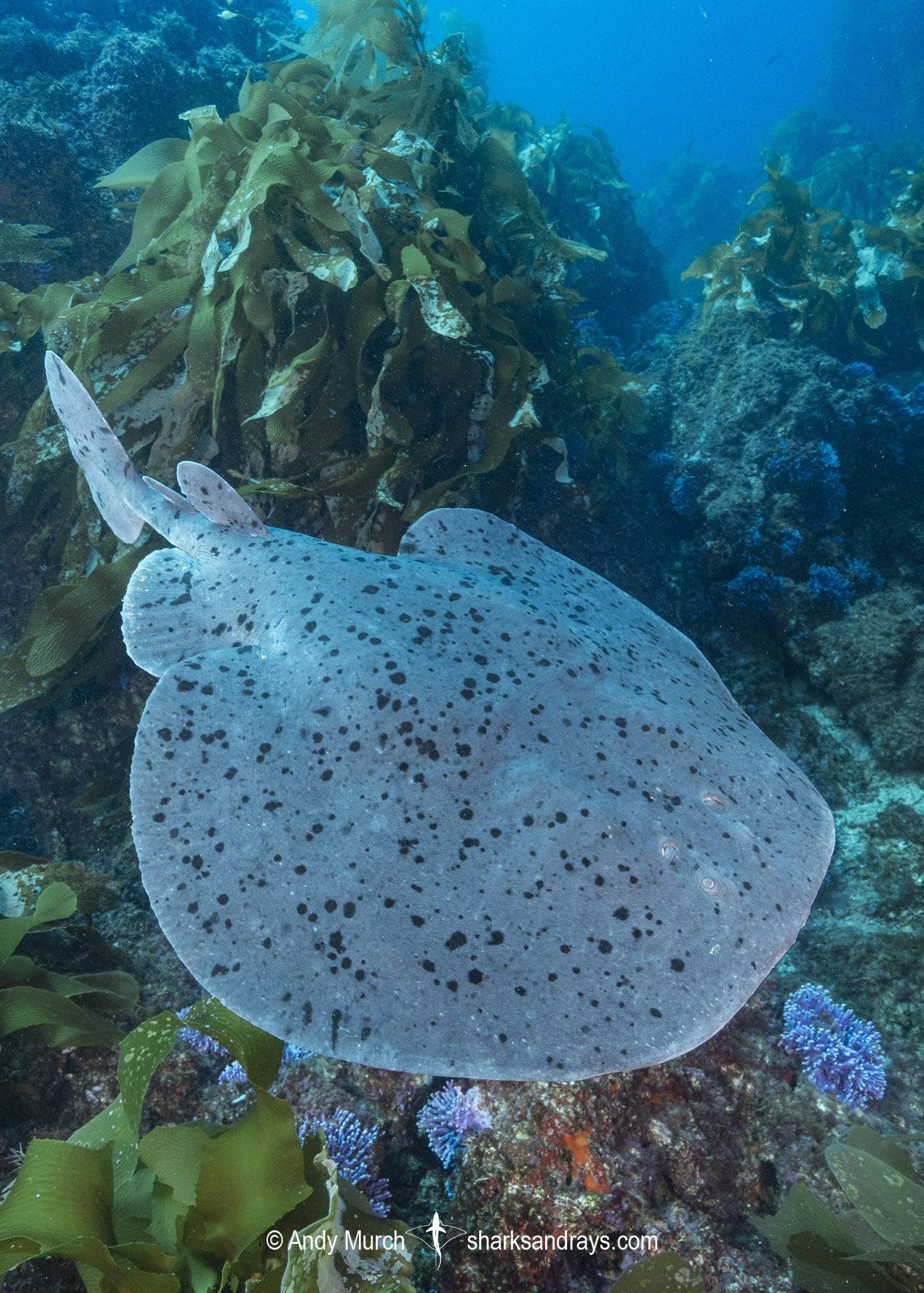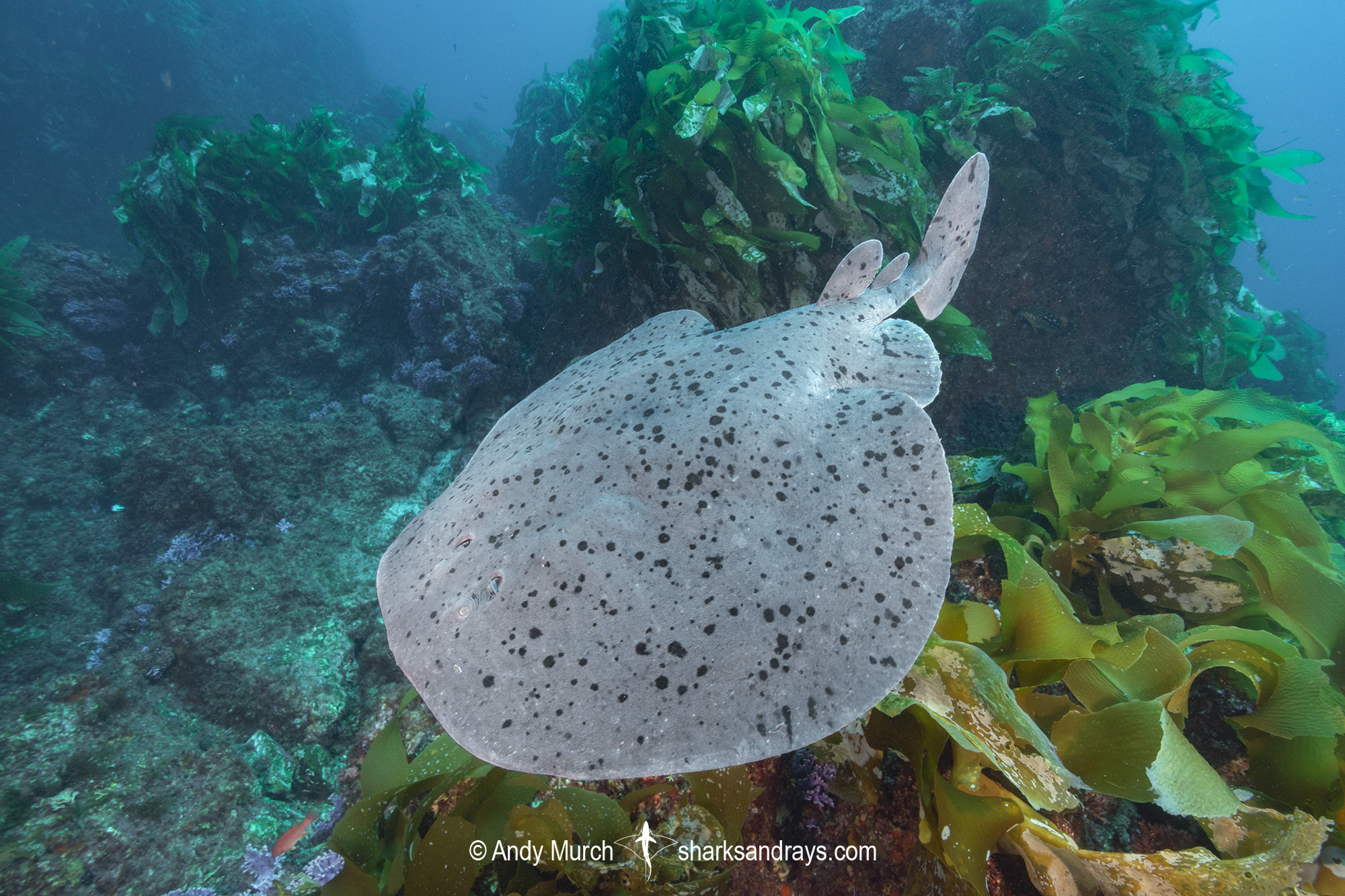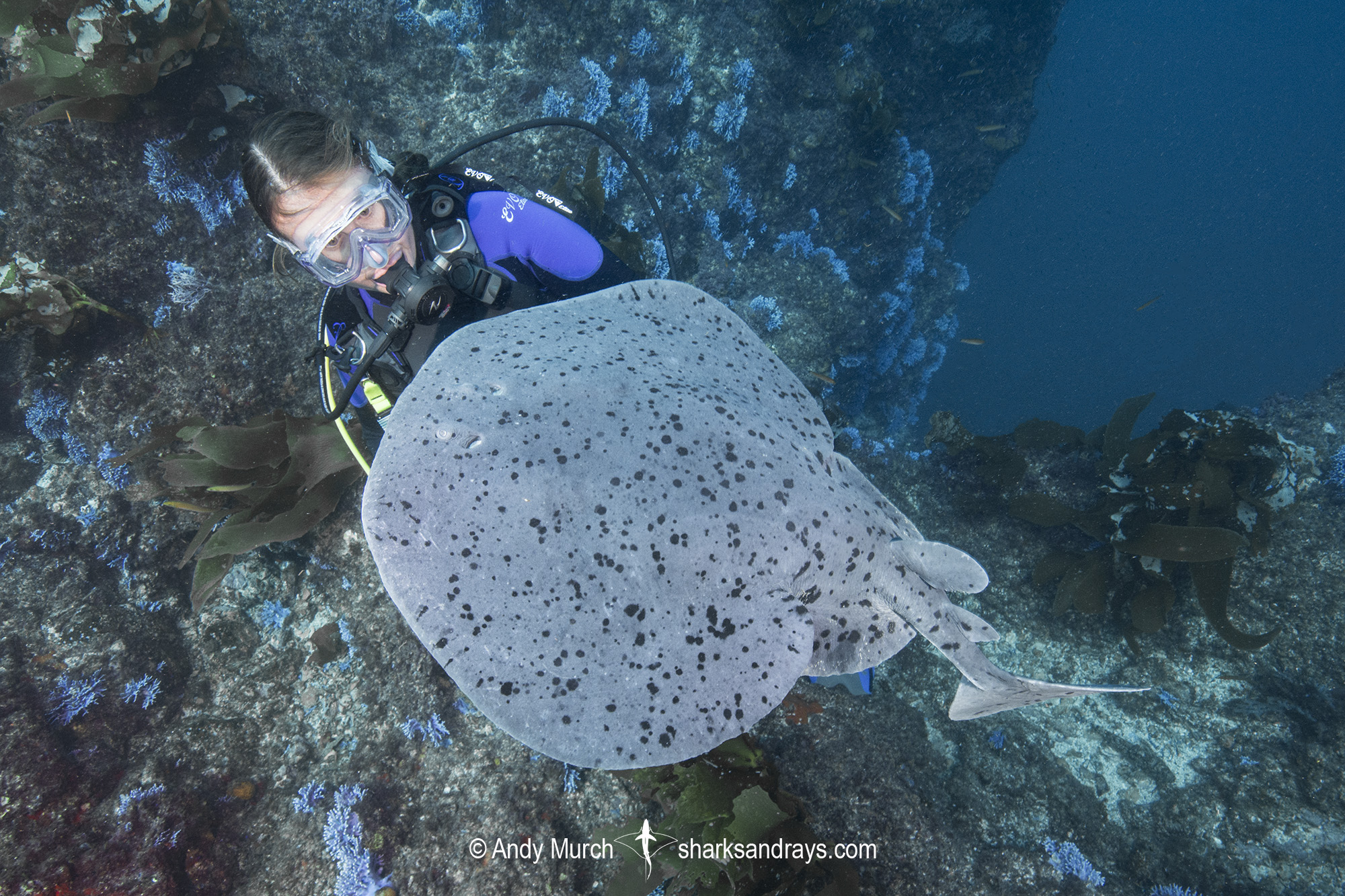Common names
Pacific Torpedo Ray, California Torpedo Ray.
Binomial
Tetronarce californica.
Synonyms
Tetranarce californica, Torpedo californica.
Identification
A very large torpedo ray with a broad sub-circular disc. Snout straight across or weakly convex. Pectoral fin apices broadly rounded. Eyes small; smaller than spiracles. Spiracles sub-oval without papillae or raised margins. Mouth strongly arched. Nostrils large and round.
Pelvic fins very wide, margins broadly rounded. Tail short and broad based. Dorsal fins tall with broadly rounded apices and posterior margins. First dorsal insertion level with pelvic fin insertion. Caudal fin sub-triangular and large, with tall dorsal and ventral lobes, apices narrowly rounded, posterior margin convex.
Colour
Dorsum and fins bluish grey to greyish brown, with scattered small black flecks. Ventrum white.
Size
Maximum length 137cm. Size at birth unknown.

Conservation Status
LEAST CONCERN
The Pacific Torpedo Ray (Torpedo californica) is an uncommon, discarded bycatch in commercial fisheries. It is targeted for its electric organs by the biomedical industry, but taken in very low numbers. Very little population data is available, but it is assumed to be stable.
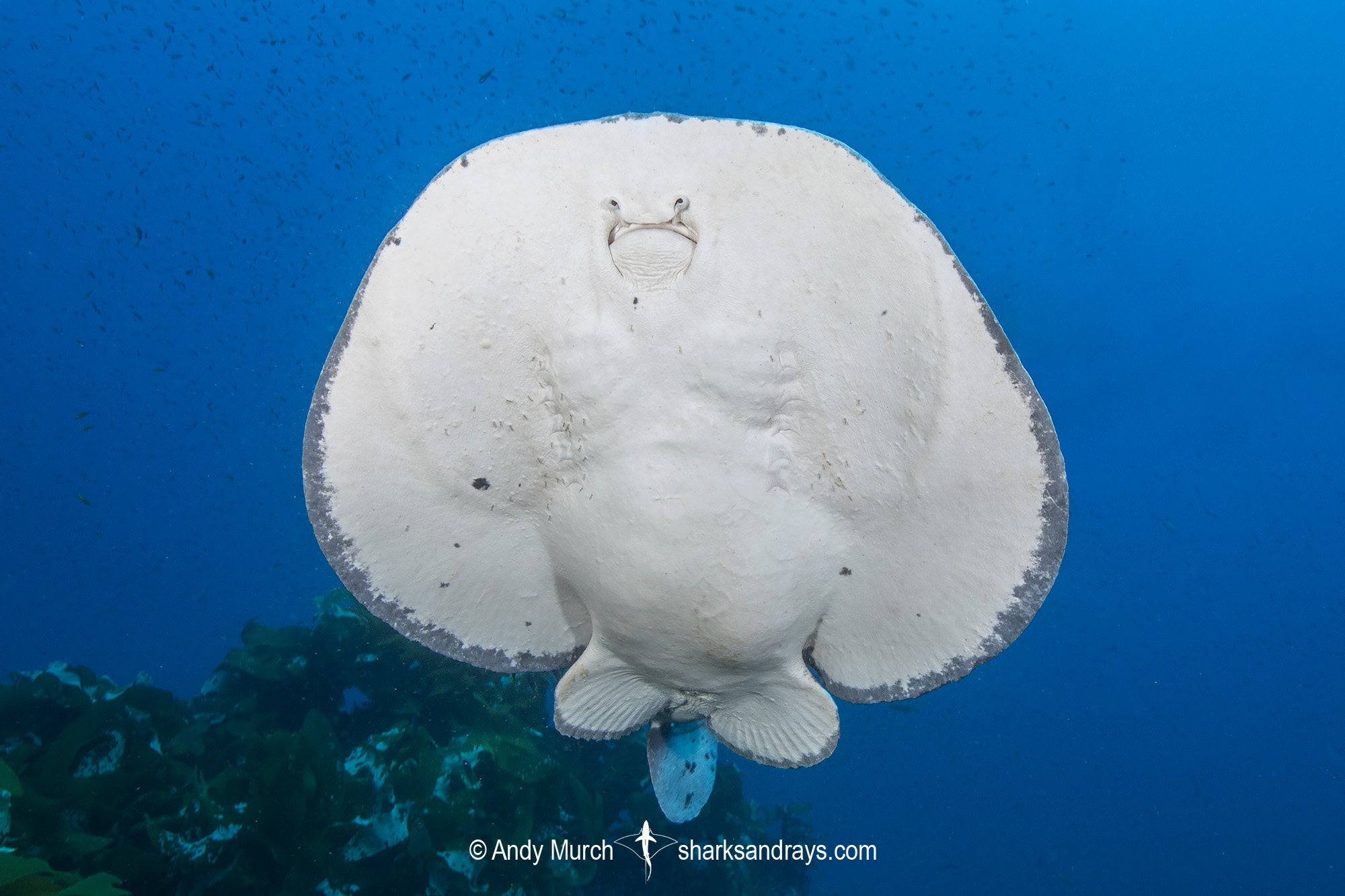
Habitat
Temperate seas. Benthic on soft bottoms, and rocky reefs, sometimes within kelp forests, and on continental shelf. From 5-275m.
Distribution
Eastern and northwestern Pacific. In the eastern Pacific from Baja California to Haida Gwaii, British Columbia. Possibly also off Japan.
Reproduction
Aplacental viviparous. Litter size up to 17.
Diet
Diet consists exclusively of small fishes.
Behavior
The Pacific torpedo ray immobilizes prey by stunning them while buried under sand. It also hunts fishes in open water.
Moves inshore during the summer months.
Reaction to divers
Easy to approach. Even when encountered while free swimming, the Pacific torpedo ray is quite nonchalant when in close proximity to divers and may even bump into them.
Diving logistics
Although rarely encountered throughout much of its range, the Pacific torpedo ray is quite common around Catalina Island in Southern California. Animals are occasionally spotted at dive sites such as the shore dive at Casino Point right in Avalon, but the best spot to see this species is at Farnsworth Bank on the west side of the island. Unless you have your own boat, this is a difficult spot to reach because the weather has to be perfect to dive there so Catalina dive companies seldom go.
What’s new
View our full list of updates
Similar species
No other torpedo rays share the same range as the Pacific torpedo ray.


